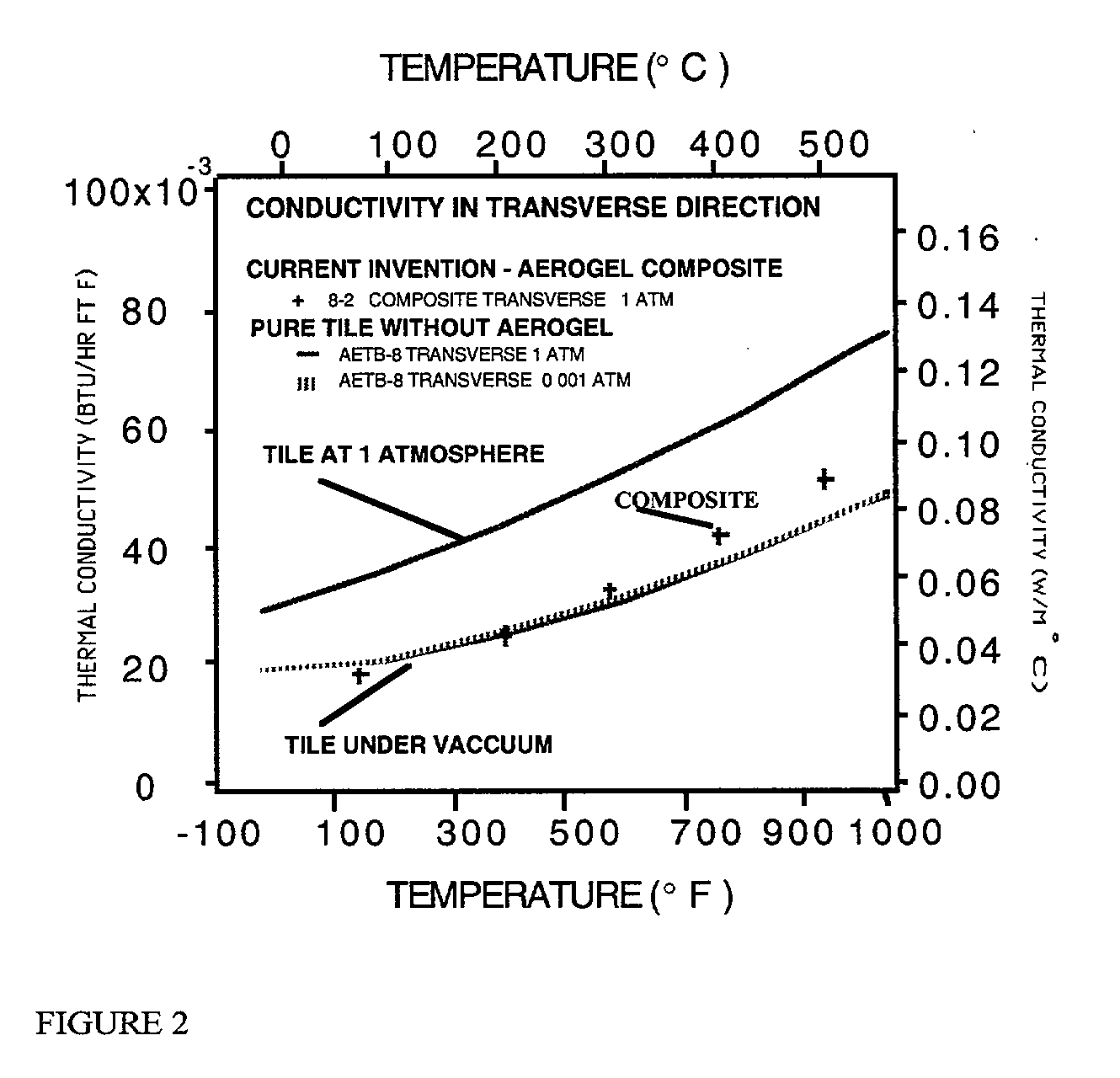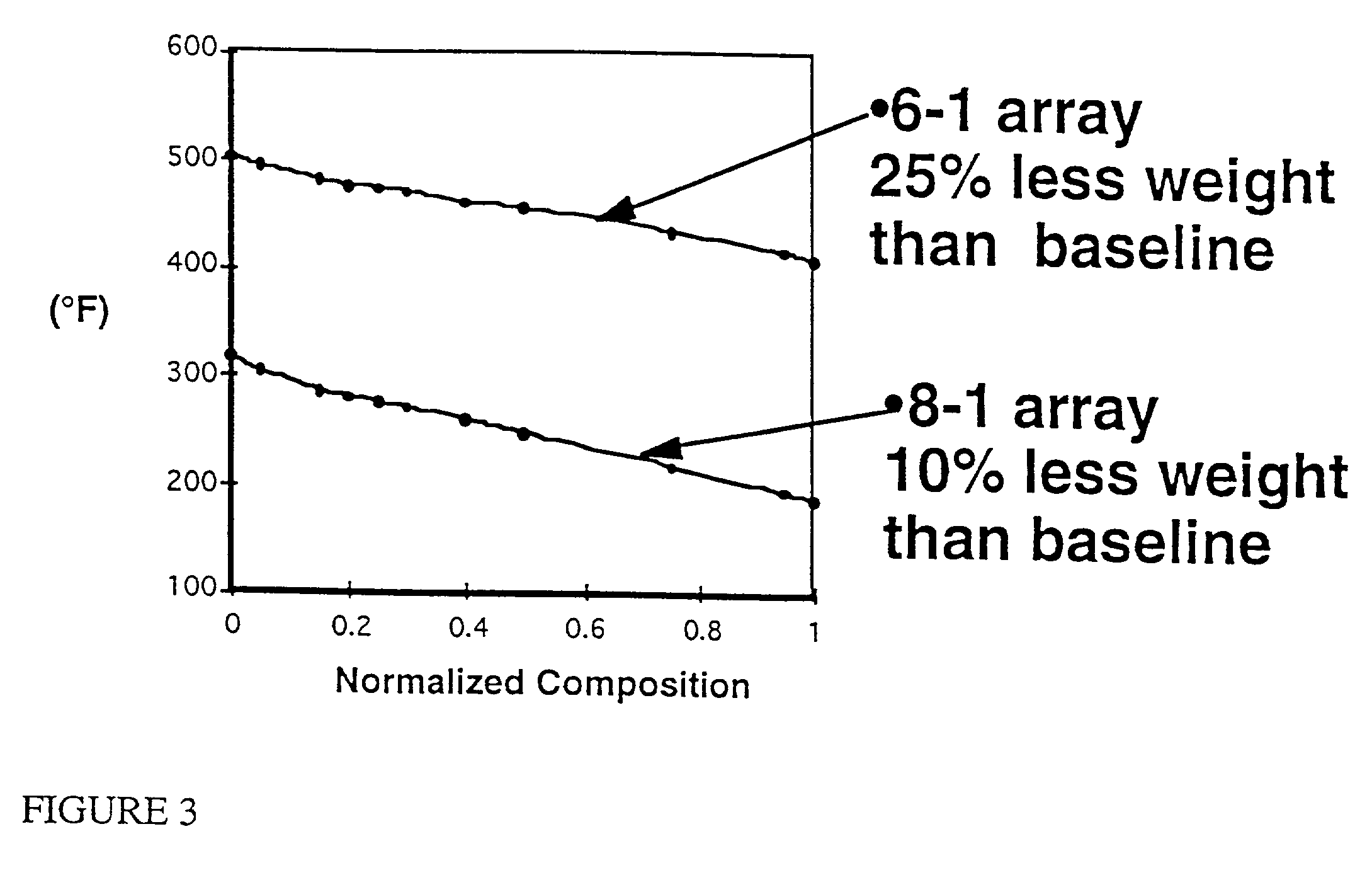Aerogel loaded tile composite material
a composite material and aerogel technology, applied in the field of single or multi-layered aerogel composite materials, can solve the problems of cryopumping and condensation, which are particularly serious problems, and achieve the effects of eliminating adhesive bonding or mechanical attachment, eliminating complicated, expensive installation, inspection and verification procedures, and high mechanical strength
- Summary
- Abstract
- Description
- Claims
- Application Information
AI Technical Summary
Benefits of technology
Problems solved by technology
Method used
Image
Examples
Embodiment Construction
[0025] Referring to FIGS. 1-6, the present invention composite material comprises an aerogel impregnated into a rigid porous preform fiber ceramic matrix. The matrix may be premolded or machined. The matrix is at least partially impregnated with an aerogel precursor solution and processed to form at least one discrete aerogel layer within the matrix. Several aerogel layers are also within the scope of the invention, as are aerogel layers of the same or different composition. In one embodiment of the present invention, a silica aerogel is located in an aluminum-silicate fiber matrix.
[0026] The fiber dimensions are not particularly limited, although a fiber diameter of from 1 to 15 microns and length of the fibers from 0.3 to 1.5 cm can generally be employed.
[0027] Preferred fibers include silicon dioxide fibers, at least 99.6% pure, manufactured by Schuller and commercially available as Microquartz 108 fibers; Nextel 312 (an aluminoborosilicate or ABS fiber) produced by the 3M Compan...
PUM
| Property | Measurement | Unit |
|---|---|---|
| length | aaaaa | aaaaa |
| diameter | aaaaa | aaaaa |
| porosity | aaaaa | aaaaa |
Abstract
Description
Claims
Application Information
 Login to View More
Login to View More - R&D
- Intellectual Property
- Life Sciences
- Materials
- Tech Scout
- Unparalleled Data Quality
- Higher Quality Content
- 60% Fewer Hallucinations
Browse by: Latest US Patents, China's latest patents, Technical Efficacy Thesaurus, Application Domain, Technology Topic, Popular Technical Reports.
© 2025 PatSnap. All rights reserved.Legal|Privacy policy|Modern Slavery Act Transparency Statement|Sitemap|About US| Contact US: help@patsnap.com



